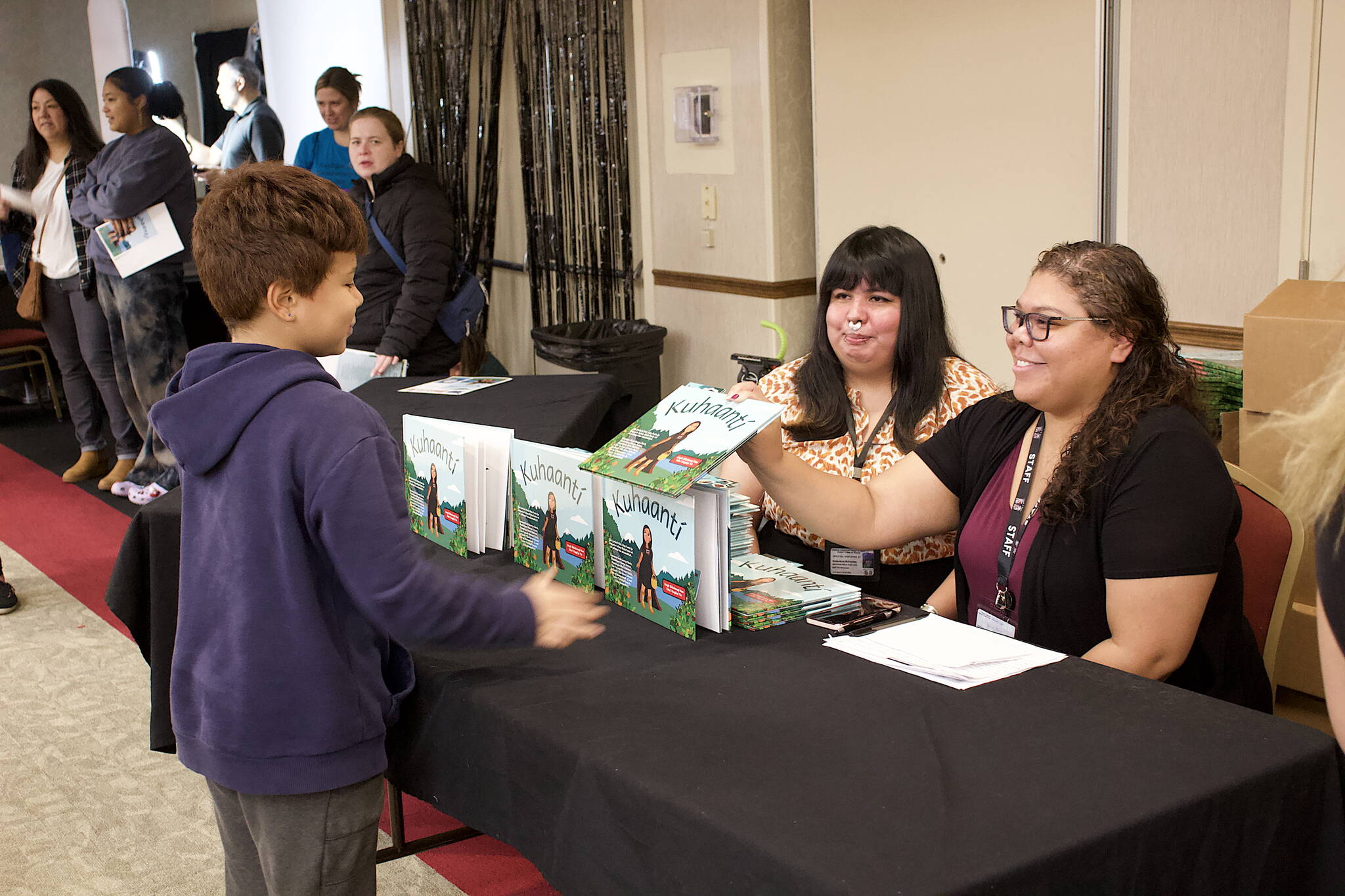The title translates to “orphan” in English, but people celebrating the release of the Lingít-language children’s book “Kuhaantí” emphasized the project is very much a multigenerational family effort by the Southeast Alaska Native community.
“Kuhaantí” is intended to be the first of nine books and animated videos produced during the next two years sharing tribal stories in their Native language, the first publications of their kind in decades, according to officials involved with the project. Copies of “Kuhaantí” were distributed free to children during a book launch party Friday night at Elizabeth Peratrovich Hall hosted by the Central Council of Tlingit and Haida Indian Tribes of Alaska along with the Goldbelt Heritage Institute.
“When we were growing up we didn’t have this,” said Richard Chalyee Éesh Peterson, president of Tlingit and Haida. “We didn’t have these opportunities. And it may not make sense because certainly we had more elders, we had more First Language speakers. But we know because of things like boarding schools and historic trauma there was a lot of shame, and people telling us that we couldn’t probably be who we are. And today we can be, but we have to reclaim it. And this is just us reclaiming our place. It’s us reclaiming our languages.”
The book “tells the story of the orphan Sahaan as she journeys through difficult times and learns life lessons that teach her the importance of the tribal value of respect,” according to a press release by Tlingit and Haida. The book is written entirely in Lingít, without English translations.
“The goal is to let the Lingít language shine all on its own while inviting folks to begin or continue their language reclamation journey,” the release notes. “A visual glossary of Lingít words and corresponding pictures is included to help kids understand the book without relying on English translations.”
In addition, an animated video will be made available for viewing online in the coming weeks at Goldbelt Heritage Foundation’s Atlas curriculum portal.
University of Alaska Southeast language professor X̱ʼunei Lance Twitchell collaborated on the authoring of the book — and the eight additional planned stories — by capturing in writing the stories told master Lingít speakers Kaxwaan Éesh George Davis and Shaksháani Marge Dutson. Numerous other tribal officials also participated in the translation process. The illustrations were done by artists G̲at X̲wéech Nick Alan Foote and Jaax̱snée Kelsey Mata Foote.
During Friday’s book launch, Twitchell offered tributes to Davis and Dutson — who passed away before the book’s release — as well as other past and present contributors over a period of years.
“It was a vision quite some time ago to have illustrated books and animations to accompany our stories so we wouldn’t need the English, and so to see this dream come true is really amazing today,” he said.
The foundation for the project began over 10 years ago with Lingít Shkalneegí Haa Yátx’i Kagéiyi Yís, a collaborative collection of stories as part of Tlingit and Haida’s Head Start program, and translated into Lingít by GHF with support from Sitka Tribe of Alaska and Teslin Tlingit Council, according to Tlingit and Haida’s press release.
Peterson, in his speech to the packed hall, noted “we’re kind of working against the clock to do some of this work to build more speakers, to bring more opportunities. And this is doing that.”
“This is the first of nine books in this series,” he said. “And my hope is this is just the very first series, the very beginning of our partnerships and collaboration of our entities holding each other up to make sure that our languages are available in many different media — books, TV, apps, all those things — and the only thing that will stop those from happening is if we don’t work together.”
• Contact Mark Sabbatini at mark.sabbatini@juneauempire.com or (907) 957-2306.

